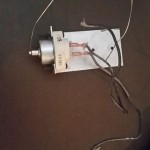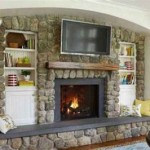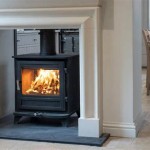How To Lay Brick Fireplace: A Comprehensive Guide
Constructing a brick fireplace can be a rewarding yet challenging project. A well-built brick fireplace not only adds aesthetic appeal but also provides a functional heat source. This article offers a comprehensive guide on how to lay a brick fireplace, covering crucial aspects from planning and preparation to the actual bricklaying process.
Before embarking on this project, it’s paramount to understand the scope of work involved. This is not a simple DIY task and requires familiarity with masonry techniques, building codes, and safety protocols. Improper construction can lead to structural instability, fire hazards, and potential health risks due to improper ventilation. If uncertainty exists regarding the necessary expertise, consulting with a qualified professional is strongly recommended.
Several factors must be considered before commencement. These include local building codes, the fireplace's intended design and size, the type of brick and mortar to be used, and the necessary tools and equipment. Diligent planning and preparation are crucial for a successful outcome.
Establishing a Solid Foundation
The foundation is arguably the most critical element of any brick structure, and a fireplace is no exception. A weak or inadequately sized foundation will ultimately lead to cracking, settling, and potential collapse. The foundation must be designed to bear the considerable weight of the brick fireplace, considering factors such as soil type, ground conditions, and the fireplace's dimensions.
The foundation should extend below the frost line to prevent movement caused by freezing and thawing cycles. This depth varies geographically, so consulting with local building authorities is essential. The foundation typically consists of a concrete slab, reinforced with steel rebar to enhance its strength and durability. The slab must be level and evenly supported to distribute the weight evenly.
The dimensions of the foundation should be larger than the base of the fireplace to provide a stable platform. A common practice is to extend the foundation at least 6 inches beyond the fireplace's perimeter. This overhang provides additional support and helps to prevent erosion around the base of the structure.
Pouring the concrete foundation requires careful attention to detail. The formwork, which defines the shape of the foundation, must be sturdy and properly aligned. The concrete mix should be of the correct consistency and strength, according to local building codes. After pouring, the concrete must be allowed to cure properly, typically for at least 7 days, before proceeding with the bricklaying process. Dampening the concrete periodically during the curing process helps to prevent it from drying out too quickly, which can weaken the structure.
Once the foundation has cured, it should be inspected for any cracks or imperfections. Any defects should be addressed before proceeding with the next stage of construction. A level should be used to ensure that the foundation surface is perfectly flat and even. Any unevenness can be corrected with a layer of mortar before laying the first course of bricks.
The Importance of Proper Bricklaying Techniques
Bricklaying is an art and a science. Proper techniques are essential for creating a structurally sound and aesthetically pleasing fireplace. This involves several key aspects, including mortar mixing, brick selection and preparation, and precise brick placement.
Mortar is the binding agent that holds the bricks together. The correct mortar mix is crucial for ensuring the fireplace's durability and resistance to the elements. The mortar should be mixed according to the manufacturer's instructions, using the correct ratio of cement, lime, and sand. Too much or too little of any ingredient can affect the mortar's strength and workability. It is preferable to utilize a mortar mixer to ensure consistent proportions and avoid lumps. The mortar should have a plastic consistency, allowing it to adhere to the bricks without being too runny.
Brick selection is also important. Bricks should be of consistent size and shape and free from cracks or imperfections. Different types of bricks are available, each with its own unique properties and characteristics. Firebricks are specifically designed for high-temperature applications and are essential for lining the firebox of the fireplace. These bricks are more resistant to heat and thermal shock than standard bricks.
Before laying the bricks, it's advisable to soak them in water for a short period. This helps to prevent the bricks from absorbing moisture from the mortar, which can weaken the bond. The bricks should be laid in a staggered pattern, with the joints offset from course to course. This interlocks the bricks and distributes the weight evenly, creating a stronger structure.
A brick trowel is used to apply the mortar to the bricks. The mortar should be applied in a consistent layer, ensuring that all the joints are filled completely. Excess mortar should be removed with the trowel. A level and plumb bob should be used to ensure that the bricks are aligned properly. The bricks should be tapped gently with the trowel to ensure that they are seated firmly in the mortar.
The joints between the bricks should be finished using a jointing tool. This helps to create a neat and uniform appearance. Different types of joints are available, each with its own aesthetic appeal. The choice of joint depends on the desired look of the fireplace.
Constructing the Firebox and Chimney
The firebox is the heart of the fireplace, where the fire burns. It must be constructed with fire-resistant materials and designed to safely contain the fire and direct the smoke up the chimney. The chimney is responsible for venting the smoke and combustion gases away from the house. Its construction is critical for safety and efficiency.
The firebox should be lined with firebricks, which are designed to withstand the high temperatures generated by the fire. The firebricks should be laid in a bed of fireclay mortar, which is specifically formulated for high-temperature applications. The firebox should be sized appropriately for the intended use of the fireplace. A firebox that is too small will not provide adequate heat, while a firebox that is too large will waste energy and reduce efficiency.
A smoke chamber is located above the firebox. This chamber helps to channel the smoke and combustion gases into the chimney. The smoke chamber should be smoothly tapered to prevent turbulence and promote efficient airflow. The walls of the smoke chamber should be lined with firebricks or a refractory material.
The chimney should extend high enough above the roofline to ensure adequate draft. The height of the chimney depends on several factors, including the roof pitch, the surrounding terrain, and local building codes. A chimney that is too short will not provide sufficient draft, resulting in smoke backing up into the house.
The chimney should be constructed with durable materials that can withstand the elements. Brick or concrete blocks are commonly used for chimney construction. The chimney should be lined with a flue liner, which protects the chimney walls from the corrosive effects of the combustion gases. Flue liners are typically made of clay, metal, or concrete.
Proper ventilation is essential for safe and efficient fireplace operation. The fireplace should have a properly sized air inlet to supply fresh air for combustion. The chimney should be regularly inspected and cleaned to remove any creosote buildup. Creosote is a flammable substance that can accumulate in the chimney and pose a fire hazard.
Laying a brick fireplace is a complex undertaking that demands meticulous planning, precise execution, and a thorough understanding of masonry principles. The foundation must be stable, the bricklaying should adhere to accepted techniques, and the firebox and chimney must be constructed with appropriate materials and dimensions. While this guide furnishes a detailed overview, consulting with experienced professionals is always recommended to ensure the fireplace meets all safety standards and performs optimally.

How To Build An Indoor Fireplace The Constructor
How To Build A Brick Chimney Stack Complete Guide

Build A Fireplace Brick By Fine Homebuilding

How To Build An Indoor Fireplace The Constructor

How To Build A Brick Hearth Ehow

How To Install Brick On A Fireplace Our Family Maison

Diy Brick Fireplace Build A

How To Build A Brick Fireplace Diy Part 1 Of 5

Diy Painted Brick Fireplace Makeover On A Budget Before After The Confused Millennial

How To Install A Floating Mantle The Easy Way In Just One Afternoon








